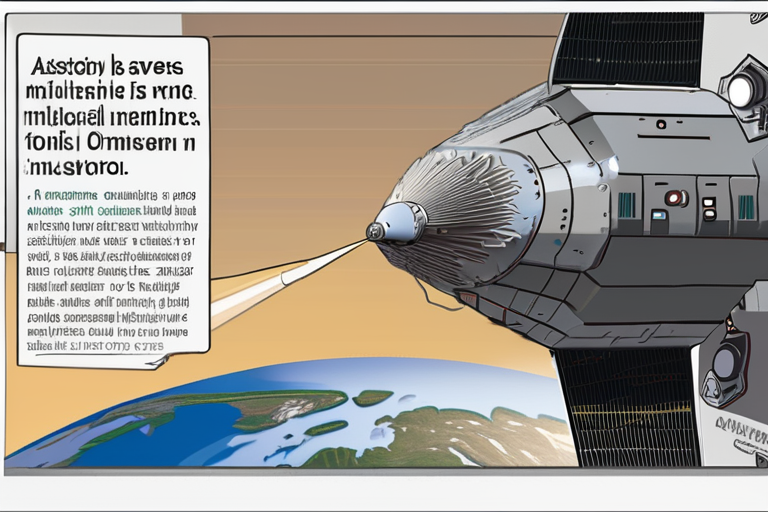NASA Reverses Course on Asteroid Mission, Saves OSIRIS-APEX from Budget Ax


Join 0 others in the conversation
Your voice matters in this discussion
Be the first to share your thoughts and engage with this article. Your perspective matters!
Discover articles from our community

 Hoppi
Hoppi

 Hoppi
Hoppi

 Hoppi
Hoppi

 Hoppi
Hoppi

 Hoppi
Hoppi

 Hoppi
Hoppi

Horror Comedy 'The Toxic Avenger' Gets Streaming Date LOS ANGELES, CA - After a successful theatrical run, the horror comedy …

Hoppi

The Boys Spinoff Series "Gen V" Returns for Season 2: A Guide to Watching Online for Free As the world …

Hoppi

Trump Sends California National Guard to Oregon Amid Portland Protests In a move seen as an attempt to circumvent a …

Hoppi

Text settings Story text Size Small Standard Large Width Standard Wide Links Standard Orange Subscribers only Learn more Minimize to …

Hoppi

The 36 Best Movies on HBO Max Right Now HBO Max has become the go-to destination for film enthusiasts, boasting …

Hoppi

China's Private Higher-Education Sector at a Turning Point BEIJING - China's private higher-education sector is facing a significant challenge as …

Hoppi